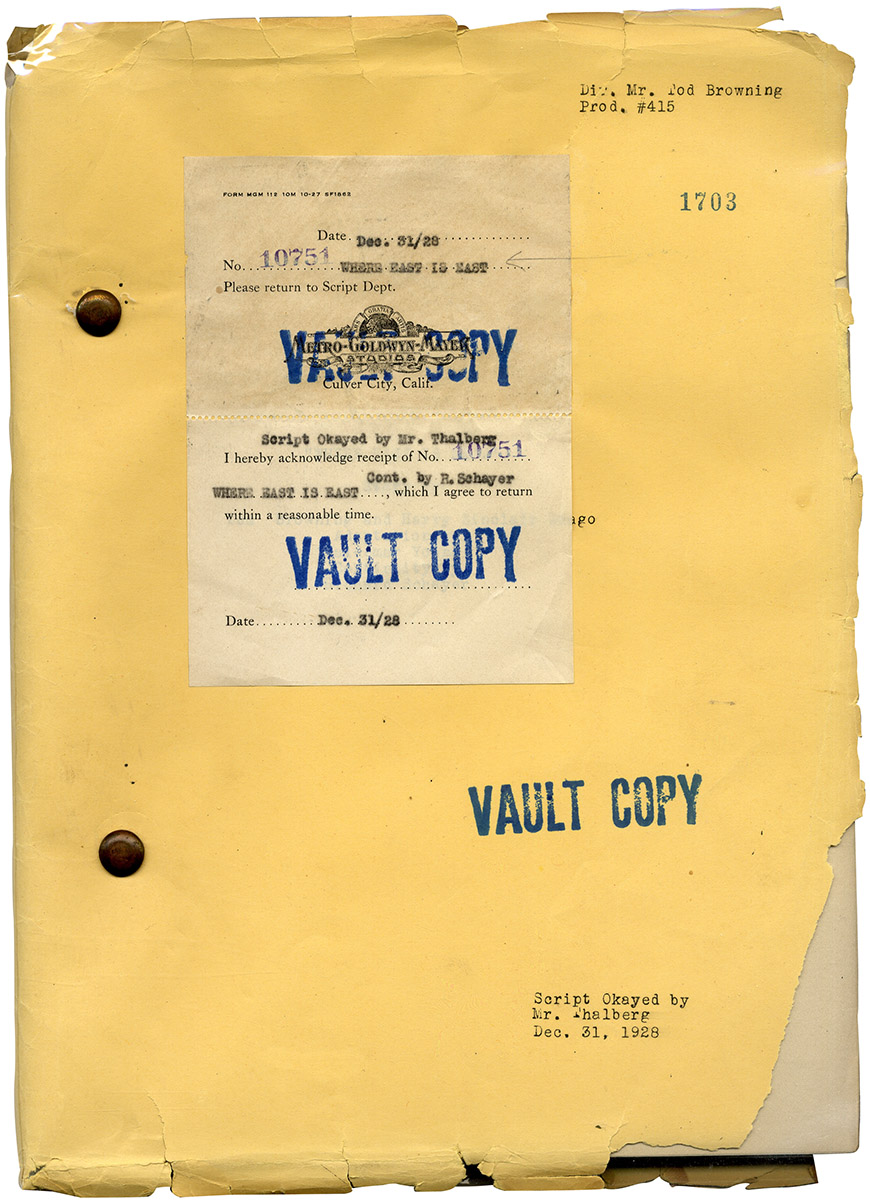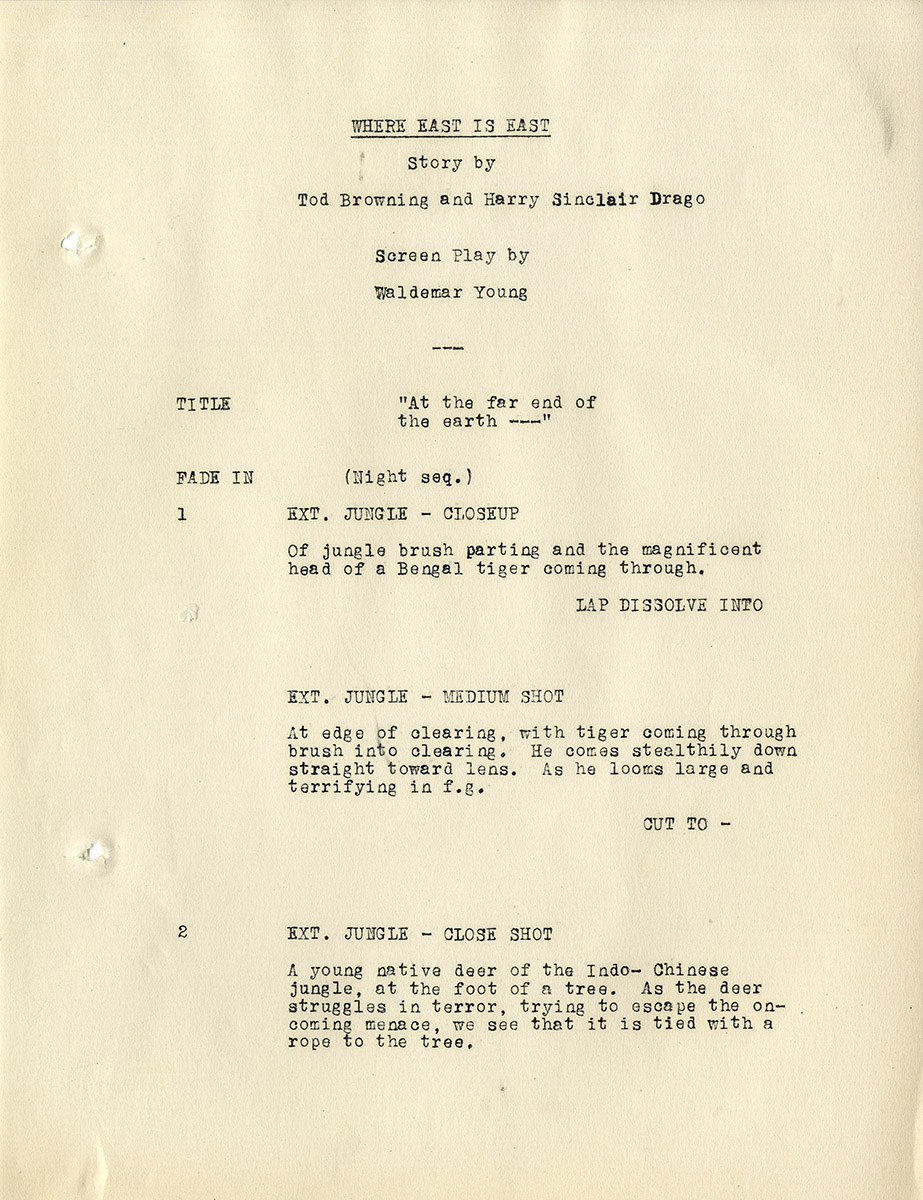Tod Browning (director), Lon Chaney (actor) WHERE EAST IS EAST (Dec 31, 1928) Film script
[Los Angeles]: MGM, 1928. Vintage original film script. Tan titled wrappers, 12 x 8 3/4″ (31 x 22 cm.), dated Dec. 31, 1928, with credits for producer Irving Thalberg. Title page integral with the first page of the text, with credits for story writers Tod Browning and Harry Sinclair Drago, and screenwriter Waldemar Young. 75 leaves, with last page of text numbered 75. Mimeograph, pages near fine in good+ wrappers (with usual chipping to yapped edges), brad bound.
Where East is East (1929) was the last of the ten films actor Lon Chaney made with his favorite director, Tod Browning. While the two of them were renowned for their work in the horror and crime/mystery genres, Where East is East is none of the above. It would be more accurately described as an exotic melodrama. The film’s title comes from a poem by Rudyard Kipling: “Oh, East is East, and West is West, and never the twain shall meet…” (The Ballad of East and West). Except in this film, East (represented by Chaney’s Eurasian daughter) and West (represented by the young American who falls in love with her) do meet and eventually marry.
Most of the film’s story takes place in Southeast Asia, specifically Laos. Chaney plays Tiger Haynes, a heavily-scarred hunter of wild animals, which he captures live and sells to circuses in America and Europe. Tiger has a close, rambunctiously affectionate relationship with his teenage half-Laotian daughter Toyo, played by Lupe Vélez (later known as “The Mexican Spitfire”). Enter the young American Bobby Bailey (Lloyd Hughes), the son of a circus owner who is instantly attracted to Toyo, and she to him. Tiger is suspicious of Bobby at first, but warms to him after the two of them join forces in capturing an escaped tiger. The film is silent but has a synchronized music and sound effects track that particularly emphasizes the roaring of the wildlife (which must have thrilled audiences in 1929).
Bobby has to leave temporarily in order to deliver some of the captured animals and, while on a boat, runs into an exotically beautiful dragon-lady type, Madame de Sylva (Estelle Taylor), who makes up her mind to seduce him. Chaney’s character, Tiger, regards Madame de Sylva with anger and suspicion. And with good reason! She is the mother of Toyo, who deserted Tiger and his daughter when the latter was a baby girl. With nothing but evil on her mind, she follows Bobby when he returns home to Toyo. However, Tiger saves the day, and his daughter’s romance, by turning loose a wild gorilla — one that Madame de Sylva had been cruel to many years earlier — who mauls Madame de Sylva to death (off-screen) and mortally wounds Tiger in the process. Tiger watches as Bobby and Toyo are married and leave on their honeymoon, not knowing that Tiger is dying. That final note of pathos in the otherwise-happy final scene was something of a Chaney specialty.
Where East is East is an unusual entry in the Chaney/Browning canon in the way it accentuates eroticism and romance more than mystery and the macabre. The screenplay by Waldemar Young and E. Richard Schayer, based on a story by Browning and Harry Sinclair Drago, does, however, relate to Browning’s background as a carnival performer, insofar as both of the male leads are circus people.
Out of stock
Related products
-
![ESCAPADE [working title for: A WARM DECEMBER] (Jun 11, 1971) Revised First Draft screenplay](https://www.walterfilm.com/wp-content/uploads/2021/04/EscapadeSCR_a-540x695.jpg)
ESCAPADE [working title for: A WARM DECEMBER] (Jun 11, 1971) Revised First Draft screenplay
$500.00 Add to cart -
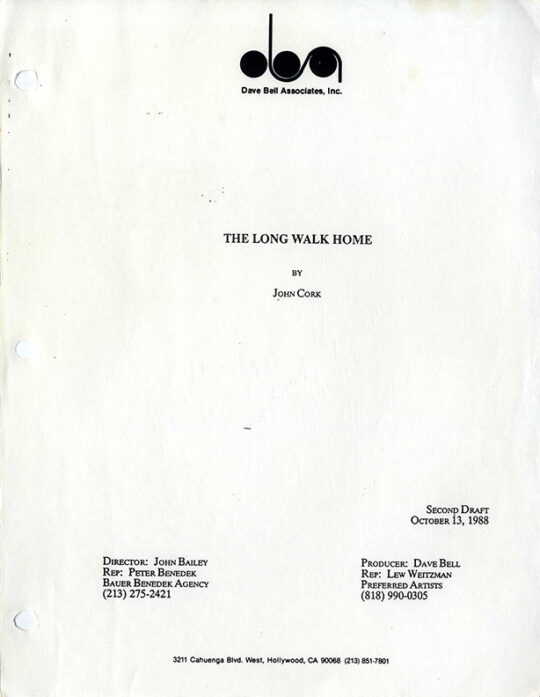
LONG WALK HOME, THE (Oct 13, 1988) Second draft film script by John Cork
$375.00 Add to cart -
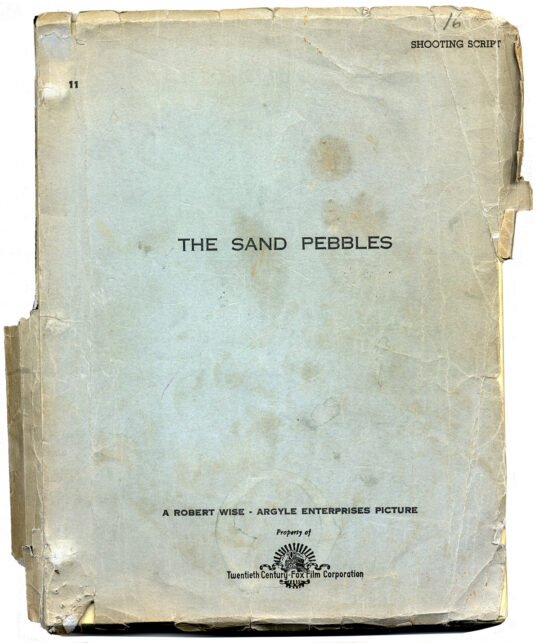
SAND PEBBLES, THE (Nov 1, 1965) Shooting script by Robert Anderson
$1,150.00 Add to cart -
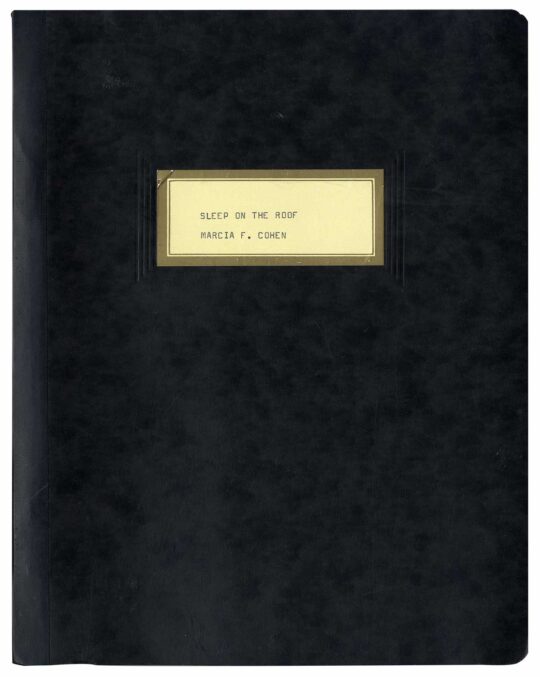
SLEEP ON THE ROOF (1967) Unproduced script based on the life of Margaret Sanger
$500.00 Add to cart

